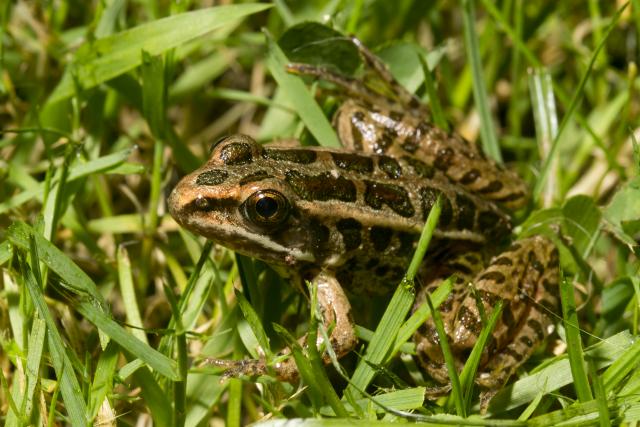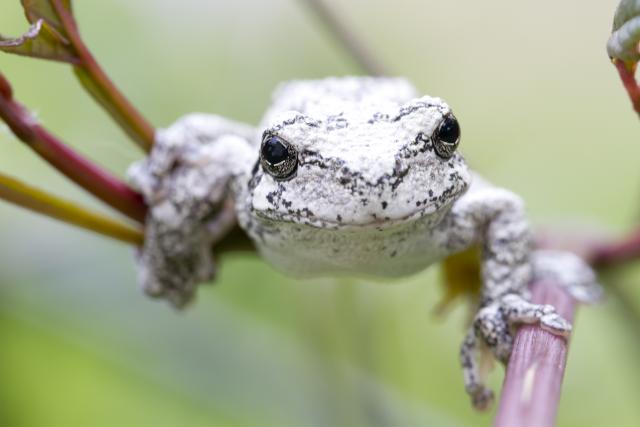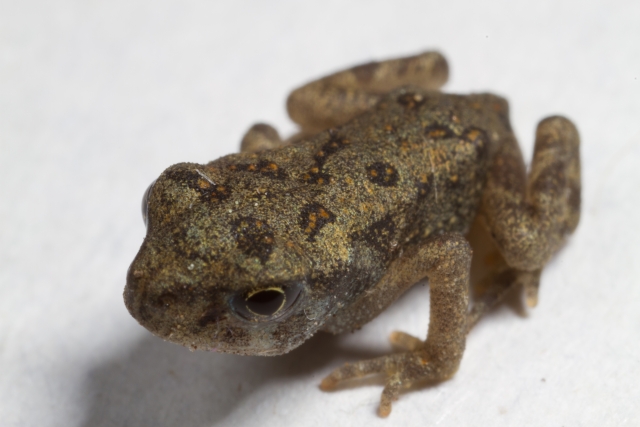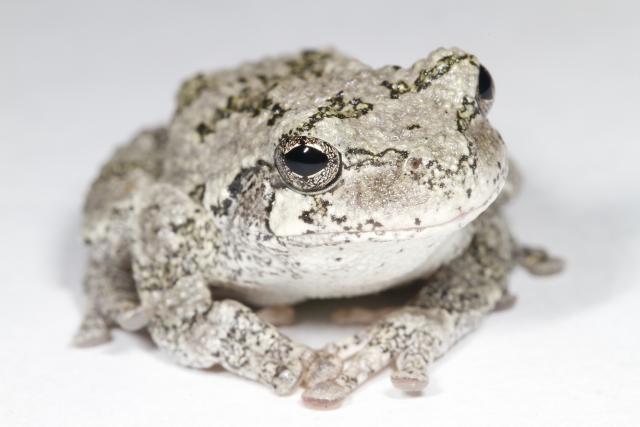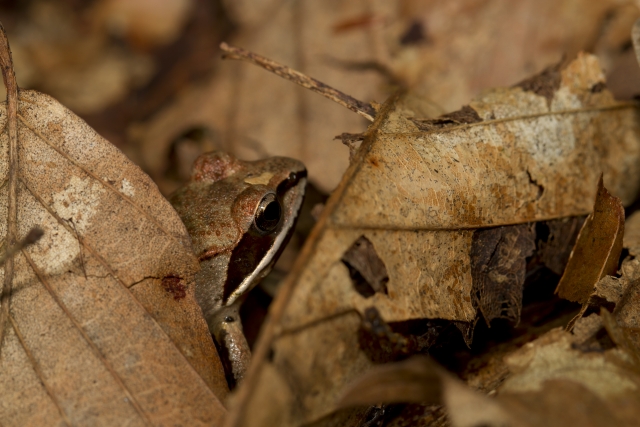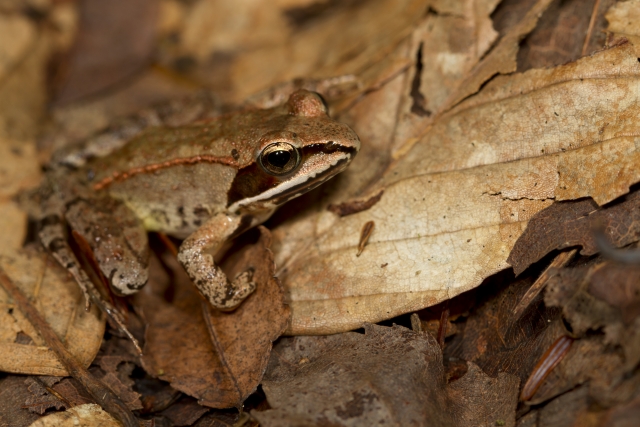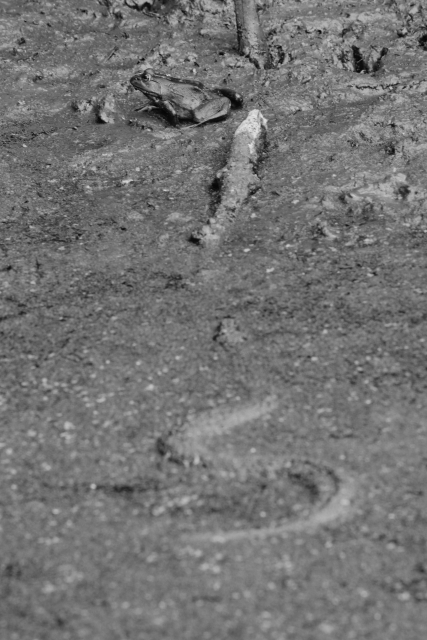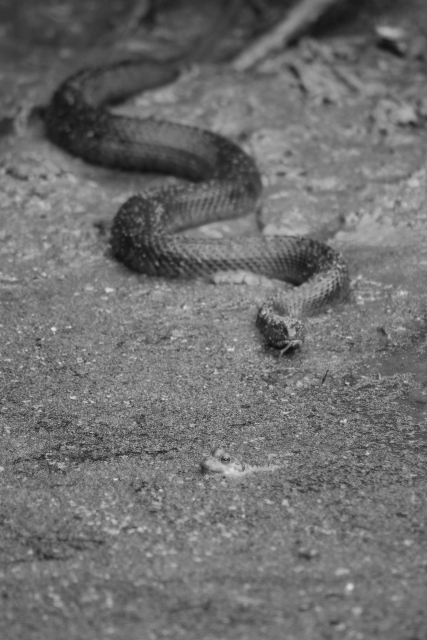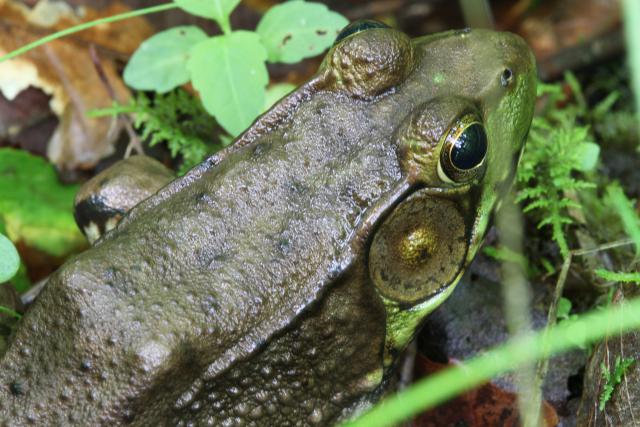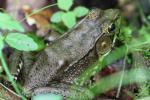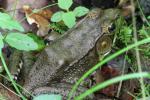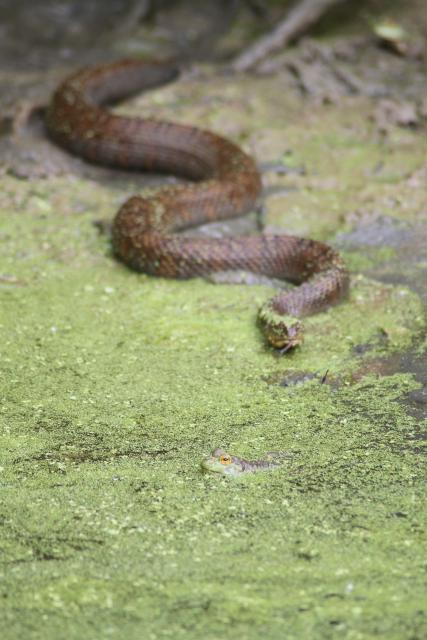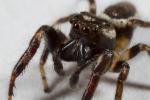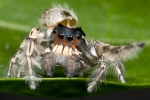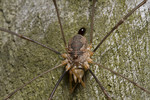frog
More Frogs
ktuli — Fri, 07/17/2015 - 07:33
I've been a bit remiss in posting new photos (and I still have a bunch to process as well), but here are a couple more frog photos...
Technical Data: Canon EOS 7D, Canon EF 100mm f/2.8L Macro IS USM, 1/200th sec at f/16. Canon Speedlight 580EX II flash in eTTL mode. Image Stabilization on. ISO 400. RAW processing in Adobe Camera Raw
Technical Data: Canon EOS 7D, Canon EF 100mm f/2.8L Macro IS USM, 1/50th sec at f/8. Image Stabilization on. ISO 400. RAW processing in Adobe Camera Raw
- Bill
Grey Treefrog
ktuli — Sun, 07/12/2015 - 19:31
Technical Data: Canon EOS 7D, Canon EF 100mm f/2.8L Macro IS USM, 1/200th sec at f/8. Image Stabilization on. ISO 400. RAW processing in Adobe Camera Raw
- Bill
Frogs on White
ktuli — Thu, 07/09/2015 - 18:15
So I often use a white background (it is really a white cardboard box lid) for my spider and insect photos. A little over a year ago, I caught this tiny little frog and gave it the same treatment and liked the results. Here's another shot from that set...
Technical Data: Canon EOS 7D, Canon MP-E 65mm f/2.8 1-5x Macro, 1/250 sec at f/16. Canon Macro Twin Lite MT-24EX in ETTL mode. ISO 100. RAW processing in Adobe Camera Raw.
Usually frogs aren't the easiest subjects to catch and bring to a "studio" to shoot, but I recently had two separate frogs that I managed to use this same technique with, and the results work very well if I do say so myself. There is something about the white backgrounds that I really enjoy for these little critters - to be able to remove the clutter of their environment and show off their patterns and personality. So here's a few more.
 |
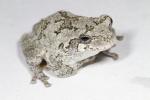 |
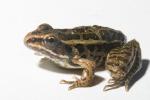 |
 |
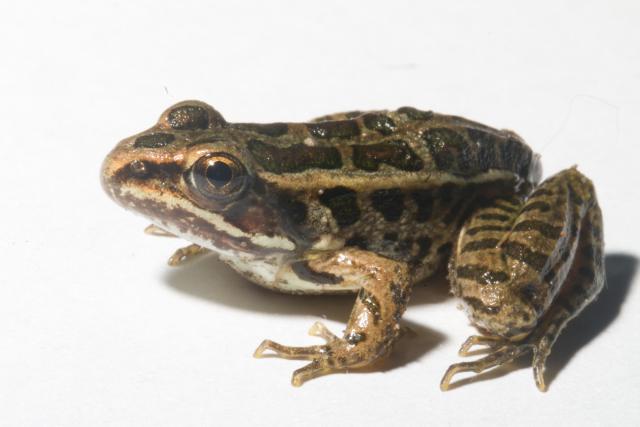 |
|||
Technical Data: Canon EOS 7D, Canon EF 100mm f/2.8L Macro IS USM, 1/200th & 1/160th sec at f/16 & f/32. Canon Speedlight 580EX II flash in eTTL mode. Image Stabilization on. ISO 100. RAW processing in Adobe Camera Raw
And just because I am feeling generous, here's a bonus shot. I was going to hold this back for another post, but I seem to have an abundance of stuff right now, so you get this extra cool shot in this post...
Technical Data: Canon EOS 7D, Canon EF 100mm f/2.8L Macro IS USM, 1/160th sec at f/16. Canon Speedlight 580EX II flash in eTTL mode. Image Stabilization on. ISO 100. RAW processing in Adobe Camera Raw
Stay tuned as I have plenty more stuff to share.
- Bill
Poll: Getting Low with Toads
ktuli — Tue, 05/05/2015 - 19:18
I've heard and read in multiple places how it is important to get low - preferably eye-level or lower - when shooting wildlife photography. I've seen and taken plenty of examples where this is definitely true, but this set of photos really seems to drive the argument home (at least for me).
So here are two photos - taken only a few seconds apart from each other, of the same subject, just from a slightly different vertical angle. Honestly, I like both photos. As stand-alone images, they both work well for me, but there is a definite clear winner when I compare them side-by-side. Take a look and then cast your vote for which angle you like better...
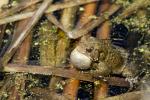 High Angle |
 Low Angle |
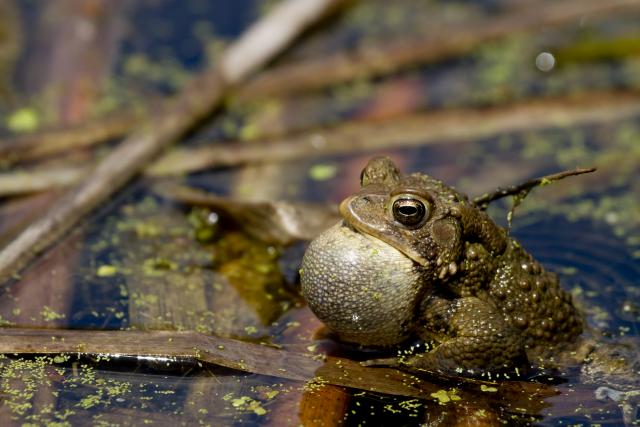 |
|
Technical Data: Canon EOS 7D, Canon EF 100-400mm f/4.5-5.6L IS USM (borrowed) at 400mm, 1/500th sec & 1/1250th sec at f/8. ISO 400. RAW processing in Adobe Camera Raw.
Cast your vote below!
- Bill
Subtle Camouflage
ktuli — Thu, 09/04/2014 - 10:18
So we'll stick with the frogs for today... Anya spotted this little fella when we were out for a nice little nature walk for her birthday last week. I am really impressed with just how simple yet effective his camouflage is. That simple dark stripe along the head really allows him to sit among leaves on the forest floor and almost disappear.
Technical Data: Canon EOS 7D, Canon EF 100mm f/2.8L Macro IS USM, 1/25th sec at f/8. Canon Macro Twin Lite MT-24EX in ETTL mode. ISO 100. RAW processing in Adobe Camera Raw.
Even without leaves on top of him, you can see how well he can blend in...
Technical Data: Canon EOS 7D, Canon EF 100mm f/2.8L Macro IS USM, 1/25th sec at f/8. Canon Macro Twin Lite MT-24EX in ETTL mode. ISO 100. RAW processing in Adobe Camera Raw.
The other thing that I saw a ton of during this hike was mushrooms, so we'll get to those soon.
Stay tuned.
- Bill
Hanging in there...
ktuli — Fri, 08/29/2014 - 07:07
Ok - I know I've been AWOL for like a month. I still have to process all the hundreds of photos from the Balloon Quest, and I've acquired a few other sets of photos that still need to be processed. We've had a ton of stuff going on here - most of which included construction/demolition work that resulted in being absolutely filthy and exhausted. Additionally, I purchased a new PC and was in the process of getting it setup to be the new photo processing machine. Since the construction work has been handed off to the contractor, I've been able to finish (at least mostly) configuring the PC and processed one set of photos on it last night. Let me tell you - it absolutely burns through them and certainly will make processing photos much quicker (not having to sit and wait for about 30 seconds for each photo to load will be amazing!).
Oh! I forgot... one of the days recently included a couple trees coming down after a storm. As we assessed the situation, Anya found a Grey Tree Frog (Hyla versicolor). Since this is something I've been wanting to find for years, I had to run inside and despite dim light conditions managed to get a handful of shots...
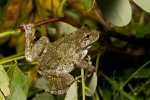 |
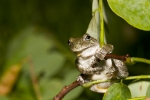 |
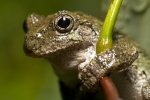 |
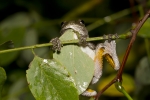 |
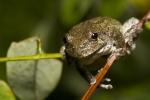 |
 |
||||
I promise I'll try and get back to posting more regularly. I really want to take advantage of all the wildlife and macro opportunities our new property is allotting me - I just need to get into a better balance of work versus play!
Stay tuned!
- Bill
Poll: Frog or Spider?
ktuli — Wed, 06/04/2014 - 21:06
Ok - I know you arachnophobes out there are going to hate this post as I put something super cute right next to something you probably think is disgusting, but I'm just so amazed by this that I have to share.
So spiders are obviously nothing new for me here, and to be honest if I was able to see them with more frequency, neither would frogs. I've always loved frogs, they fascinate me - when we owned the pet store, I had a field day buying and selling so many exotic species of frogs! I've seen some tiny frogs (breed poison dart frogs and you'll see TINY!), but I wasn't expecting what I found the other day when Anya and I took the dogs to the park for a walk.
Hopping across the path were these absolutely tiny frogs - so small that at first glance, I thought they were just crickets. However, upon further inspection I realized my error and was floored by how cute they were. We returned the next day with a couple collection containers so we could catch a few to bring home to photograph in a more controlled environment (and to not be in the way of other folks trying to use the path).
So where does the spider come in? Well, earlier in the day, Anya caught a jumping spider (a Phidippus audax... yeah, I know, I've gotten to the point where I actually know some of them by their scientific names by heart now) in our kitchen and trapped it in another one of the collection container.
Here are some photos of both the spider and the frogs at equal magnification...
 1x magnification |
 1x magnification |
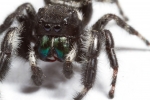 2x magnification |
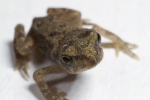 2x magnification |
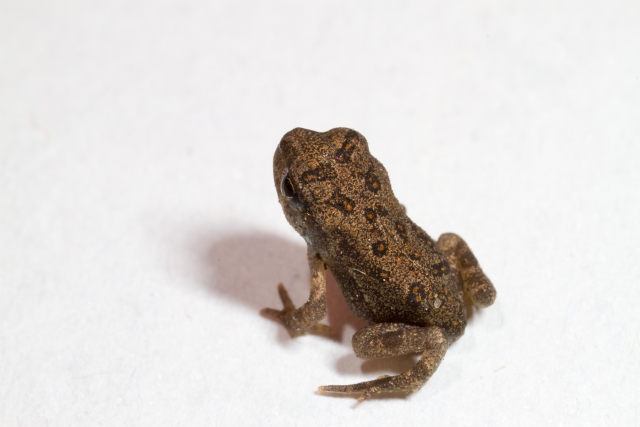 |
|||
Technical Data: Canon EOS 7D, Canon MP-E 65mm f/2.8 1-5x Macro, 1/250 sec at f/16. Canon Macro Twin Lite MT-24EX in ETTL mode. ISO 100. RAW processing in Adobe Camera Raw. (for all shots)
I know - your first reaction is going to be that these photos are just on different scales and it just appears to be that they are so close in size (honestly, I think the spider is actually a tiny bit bigger), but trust me - these are accurate depictions. In fact, the lens I was using will only focus at specific magnifications, it doesn't work any other day... so if I set it to 1:1 magnification, I can only take photos at 1:1 magnification.
So I have to ask... what is your reaction to this? Answer the poll below and let me know what you think!
- Bill
The Showdown (revisited)
ktuli — Thu, 01/10/2013 - 19:36
In a week from now, I will be hitting the two year anniversary since I started this blog. If I get the posts done in time, I will also be hitting my 400th post to celebrate the occasion. As such (and partially because I've been a tad lazy with getting the camera out as much as I should), I'm going to dig through the archives and see what gems I might have missed, or how I can give a new look to some photos I've already shared.
With that in mind, I present a couple photos that I shared here in the past (here and here). After seeing someone else share a photo of a snake that they converted to black and white, I decided to give it a shot with some of mine... here are the results...
Technical Data: Canon EOS 7D, Tamron 70-300mm f/4-5.6 Di LD Macro1:2 at 238mm, 1/32 at f/11.3. ISO. No post production. Beechwood Farms, Fox Chapel, PA.
Technical Data: Canon EOS 7D, Tamron 70-300mm f/4-5.6 Di LD Macro1:2 at 238mm, 1/130 at f/5. ISO. No post production. Beechwood Farms, Fox Chapel, PA.
Mouseover the images for the original color version.
- Bill
Depth of Field: Frog
ktuli — Wed, 09/29/2010 - 19:23
Alright, I'm sorry about being such a slacker with the posts recently, but between my photography class, and going to a Penguins game, I haven't been home a single evening this week yet.
Anyway, I thought maybe we'd take a look at depth of field. Depth of field in still photography is controlled with the aperture and is defined as the portion of the photo that is acceptable sharpness (not to be confused with focus).
Aperture on your camera is set in f/numbers - a small f/number provides a wide aperture, and a large f/number provides a narrow aperture. I know - it is confusing, but something I've found that makes it easier to understand is to think about it in terms of depth of field. If you select a small f/number, you will get a shallow (small) depth of field. Inversely, if you select a large f/number, you will get a deep (large) depth of field.
But this is much easier to see with examples...
Shallow Depth of Field Technical Data: Canon EOS 7D, Tamron 180mm f/3.5 Di SP LD 1:1 Macro, 1/3 sec at f/3.5. ISO 200. Dolica AX620B100 tripod. No post production. Kanawha State Forest, Charleston, WV.
Notice how the frog is in acceptable sharpness (but technically not tack sharp focus if you look very closely) and the background is pleasantly blurred background as I've mentioned on many other posts.
Deep Depth of Field Technical Data: Canon EOS 7D, Tamron 180mm f/3.5 Di SP LD 1:1 Macro, 8 sec at f/18.2. ISO 200. Dolica AX620B100 tripod. No post production. Kanawha State Forest, Charleston, WV.
Here, you'll notice that almost everything is in acceptable sharpness. You can see the detail in the leaves and plants around the frog. In fact, if you look closely, even the texture of the frog's skin is more detailed. However, the blades of grass in the foreground are starting to become distracting with this depth of field.
There are different reasons and different situations that contribute to why you would want to use either shallow or deep depth of field. Sometimes, you can use a shallow depth of field to eliminate some distracting background elements. Other times, you will want a deep depth of field to keep as much of the photo discernible and acceptably sharp.
I also have another set from this frog illustrating some different depths of field...
I also did a couple photos showing the aperture range of the Tokina 35mm macro lens I recently purchased. And a long while ago I did another similar write-up discussing depth of field, but it didn't have photos to compare and contrast.
Hopefully these multiple sets of photos help to illustrate depth of field so you can try it out with some photos in the future.
Leave a comment and let me know whether this made sense or if I should try again...
- Bill
The Showdown (part 2)
ktuli — Thu, 09/16/2010 - 18:52
In case you were wondering - the frog from the other day managed to get away. So did this one...
Technical Data: Canon EOS 7D, Tamron 70-300mm f/4-5.6 Di LD Macro1:2 at 238mm, 1/130 at f/5. ISO. No post production. Beechwood Farms, Fox Chapel, PA.
It has been a while since I've left the critique up to you, so have at it. Leave me a comment and let me know what you think of this photo.
- Bill

